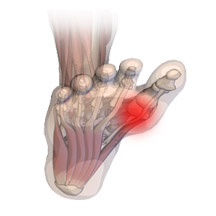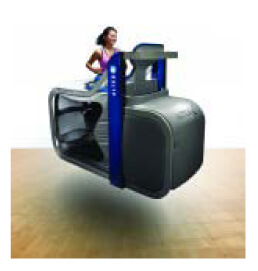What is Sesamoiditis?
There are 2 sesamoid bones beneath your big toe. These 2 bones function as a lever so that you can generate more force when you push off your toe as in running. The sesamoids are attached to the flexor tendons in your foot. These tendons transmit force which allows you to propel forward during activities like running or standing up on your toes as in ballet. For these reasons sesamoiditis is common in runners and dancers. In its truest sense sesamoiditis is inflammation of either the medial sesamoid or lateral sesamoid bone(s). However, it is important to note that sesamoiditis is often misdiagnosed and in fact the patient is suffering from other conditions.
What are some conditions that are confused with sesamoiditis?
Sesamoid Stress Fracture – Because the sesamoids are weight bearing bones and can suffer from repetitive loading and impact they are susceptible to trauma. Stress fractures occur when the bone weakens from the inside out. This type of injury requires non-weight bearing and rest from loading and impact to heal
Sesamoid Fracture – Fracture can occur from prolonged exposure to stress on the bone or a sudden moment in time where the sesamoid is exposed to more force than it can handle. Sesamoid fractures are often misdiagnosed when a patient has a bipartite sesamoid bone. A bipartite sesamoid is a normal variant where a person essentially has three sesamoids instead of two.
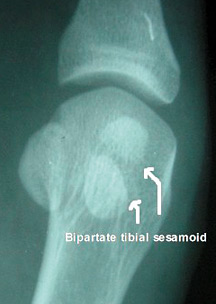
Sesamoid Bone Marrow Edema – Bone marrow edema is also known as a pre-stress fracture. This occurs when the sesamoid(s) are exposed to repeated stress. Instead of fracturing swelling occurs inside the bone cavity and causes the marrow to swell. This creates pressure and pain on the sesamoids. This injury is treated similarly to stress fracture for effective healing.
Turf Toe, Big Toe Joint Sprain, 1st MTP Sprain – The first metatarsal-phalangeal joint is a fancy way of naming your 1st big toe joint in Latin. For short it is referred to as the 1st MTP joint. If exposed to repetitive, forceful bending the ligaments beneath the big toe joint can sprain or tear. In football and soccer this injury is referred to as “Turf Toe”. This injury needs to be immobilized to be treated effectively or it can worsen resulting in a more severe ligament tear.
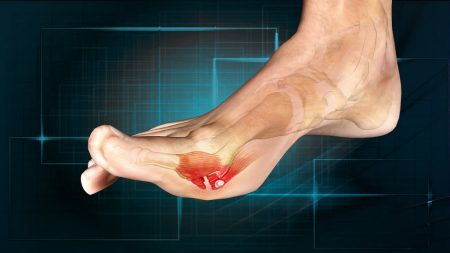
Metatarsalgia, Plantar Plate Sprain – Metatarsalgia is a catch all term to describe pain in the metatarsal region which the sesamoid qualifies. However, metatarsalgia simply means “pain in the ball of the foot” in Latin. It is not a legitimate diagnosis. In addition, it is commonly used to refer to pain in the 2nd-4th metatarsals and is the result of a plantar plate ligament sprain or tear.
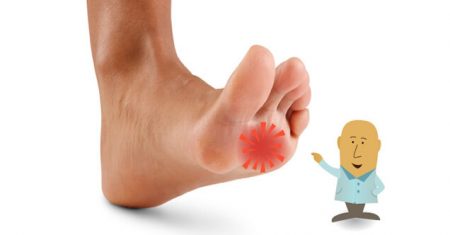
Pain in the ball of the foot can be a damaged ligament
Flexor Tendonitis, Distal Plantar Fasciitis – Tendonitis results from repetitive, forceful contractions of the flexor tendon as in running, dancing or ballet. As the tendon exerts force on the big toe to flex it also exerts force on the sesamoid bones using them as a fulcrum and lever to generate the force. Tendonitis or inflammation of the flexor tendon is your body’s natural response to micro-tearing of the tendon. When micro-tearing occurs, your body produces an inflammatory response as the initial stage of healing. If allowed to proceed without further injury or exposure to repetitive stress your body will continue to heal by entering stage two of healing called the repair phase. Unfortunately, for many athletes this never happens. Instead they are told to stretch, “ice it” and take Ibuprofen or Tylenol. They do this in the belief they are healing their body when in fact they are simply allowing themselves to go deeper into the injury and worsen it. In order to heal your body must be allowed to enter the repair stage and generate new tendon tissue. If the pain continues and injury worsen excessive scar tissue formation will occur and result in Tendonosis or Tendonopathy.
Flexor Tendonosis, Flexor Tendonopathy – If excessive scar tissue forms in the flexor tendon tendonosis or tendonopathy can occur. This is a chronic, difficult injury to treat and may require extended therapy to heal. The tendon is essentially degenerated and needs to be built back to its original form.
How do you Effectively Treat Sesamoiditis?
Once we accurately diagnosis your condition we can offer you effective treatment. Unfortunately, many patients receive an inaccurate diagnosis resulting in ineffective treatments and worsening of their condition. This happens due to doctors either not being thorough, ignorant or simply not caring. They are also often fooled by X-ray results. X-rays do not show stress fractures, bone marrow edema, ligament sprains or tendonitis. It is not unusual for doctors to tell patients nothing is wrong due to a negative X-ray result. MRI is the gold standard test in sesamoiditis cases but due to costs are not done or patients are told MRI is not necessary.
Effective treatments for sesamoiditis are stopping the activities that are causing the pain. Not wearing high heeled shoes, restrict running, jumping, dancing or any other activity that is causing repetitive loading and bending of the first toe.
There are various levels of sesamoiditis. The severity will dictate the amount of time off from sport or activity. In severe cases it may require up to three months to heal. There are some treatments that we have found to be effective in many cases. Dancers pads, custom orthotics, ultrasound therapy, taping and Altered Gravity Treadmill rehabilitation have had the most success.

